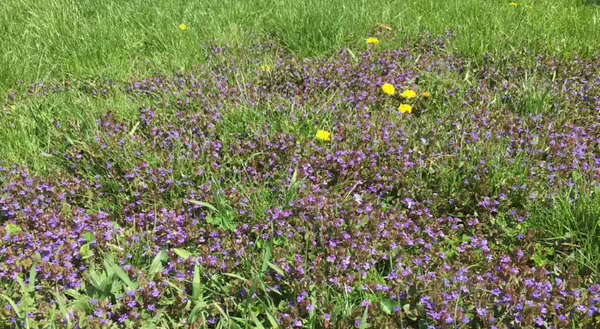Originally published by Kelly Allsup on May 19, 2019.
Mammoth dandelions, carpets of Creeping Charlie and a smattering of lambsquarters, purslane and foxtail are flourishing while we stay in our homes during the rainy spring. Weeds can be a conundrum for most gardeners and may even cause some to throw in the trowel. However, there are some gardening practices that can help you win the war against the weeds.
Weed during critical periods
There is a stage when weeds are little seedlings and only have one spindly little root. These are called thread stage weeds and are the easiest to kill. A simple roughing up of the soil can cause the roots to dry out. Once the soil clings to the root system, it can root again if it is not picked up off the ground. Local foods and small farms educator Bill Davison removes purslane from his garden area immediately because the plant has enough energy to go to seed even when it is uprooted, and most people don’t notice its miniscule flower buds.
Smother the weeds
If you were to see a soil profile of the root system of a weed, you would understand why it becomes an unwanted visitor. Once the roots have colonized the upper two feet of soil, it proves difficult to get the entire horizontal root system. You must exhaust the roots by continuously chopping off the top or smothering them. Lay pieces of cardboard or layers of newspaper topped with mulch to prevent the sun from reaching the seedlings.
Use the right tools
Bill also says the standard garden hoe is good for just about one thing, and that is hilling potatoes — covering the roots periodically so they are not exposed to sun. For weeding, he recommends a collinear hoe designed by garden guru Elliot Coleman, which allows you to stand fully upright and do precise weeding between plants. Between rows, a stirrup hoe or shuffle hoe can be used to uproot small seedlings.
Creeping Charlie dilemma
Creeping Charlie in the lawn is usually a sign of a neglected or shady lawn. In addition, it contains a chemical that suppresses the growth of other plants. You can either accept Charlie, or start to plan for complete lawn renovation by cutting out sod, smothering and then choosing the right grass species or ground covers for the site.
Flowering weeds
Never let weeds go to flower. A dandelion plant can produce 15,000 seeds. Canada thistle can produce 680 seeds per stem and the seed can remain viable for 10 to 20 years. If you can’t remove it, at least mow it or cut it before it flowers to prevent a bigger problem the following year.
